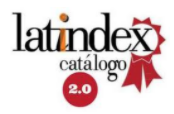Overflowed
DOI:
https://doi.org/10.35305/rpu.v0i4.70Keywords:
Borders, Overflows, Diagnostic Questions, Possibilities and limits in the clinicAbstract
The difficulty and complexity in the clinical practice invite me to make questions about it. A few ideas arise and I allow them with enthusiasm, ideas which in turn escape a linear path and thus emerge as intricate and rhizomatic.Patients that report a lot of discomfort and pain related to the persistence and insis-tence of certain symptoms, ideas that submerge patients in a state of much anxiety and worry; anguish that overflows at times, a transference bond that is complex, intense and ambiguous.Ted to impulsive responses and strict demands for immediate resolution, they find themselves prone to difficulty for - among other things- being able to build up bonds that lack fragility and lability.Certain clinical indicators make us believe that repression is the main mechanism, but at the same time, there are signs that do not coincide with a traditional transference neurosis. This leads us to ask ourselves: Is it necessary to think about new diagnostic positions?, or, Are these signs new forms of neurotic discomfort? Other questions are correlative to this: What are the possibilities and the limits for analytical work? I suggest to question some concepts and diagnostic designations related to these new modalities of expressing discomfort in culture.








 Esta obra está bajo una
Esta obra está bajo una 





